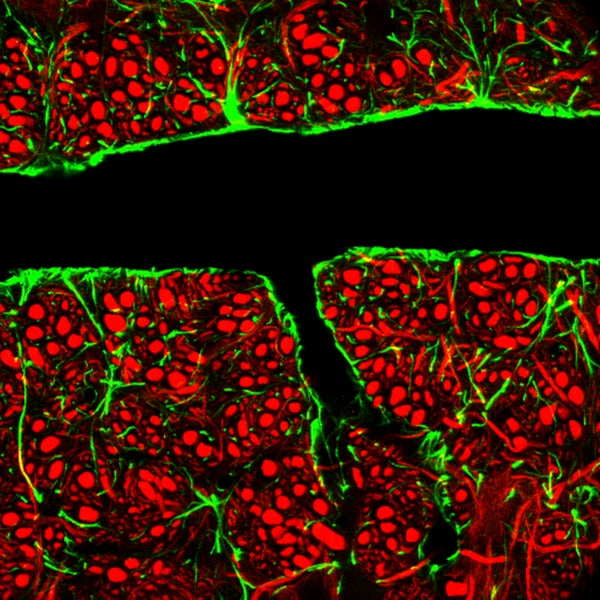An international team of researchers has developed miniscule, self-propelled devices that mimic the way cells move. These “nanoswimmers” cross the blood–brain barrier highly efficiently, and could lead to the development of drug delivery systems that navigate through tissues and organs to target specific sites precisely.
The submicron-size swimmers borrow a page from larger microorganisms that can detect nutrients and toxins in their environment, and move toward or away from them by a process called chemotaxis. Neurons deploy these same mechanisms to migrate through the developing brain. Immune cells exploit them to move to infection sites, and cancer cells use chemotaxis to spread throughout the body.
In a study described in the latest Science Advances, Adrian Joseph, a post-doctoral fellow in the department of chemistry at University College London, and his colleagues synthesized nanoscale “carriers” from different mixtures of lipid polymers that resemble the constituents of cell membranes. These molecules repel water at one end and attract it at the other, properties that cause them to self-assemble into spherical structures, which can encapsulate large payloads of biological molecules.
On supporting science journalism
If you're enjoying this article, consider supporting our award-winning journalism by subscribing. By purchasing a subscription you are helping to ensure the future of impactful stories about the discoveries and ideas shaping our world today.
Such “polymersomes” have already shown potential as vehicles for delivering drugs and genes. Yet penetrating the blood–brain barrier, which prevents microbes, toxins and large molecules from entering the brain, has proved hugely challenging. One major goal is to develop self-guided polymersomes that traverse this barrier to deliver their cargo to a specific brain area. (Another recent study also demonstrated the use of “nanoswimmers,” but they were guided to their target by a beam of light.)
Working with collaborators in China, Germany and Switzerland, the researchers filled their polymersomes with an enzyme that breaks down glucose, the brain’s primary energy source. They also synthesized the polymersomes in such a way that two types of lipids were present in different amounts, giving them a lopsided structure.
When exposed to a concentration gradient of glucose—more sugar in one spot than another—the polymersomes absorb the sugar molecules and break them down. Due to their asymmetric structure, the polymersomes release the breakdown products from one side only, propelling them in the opposite direction. “These structures work more or less like little rockets,” says chemical engineer Giuseppe Battaglia, also of University College London, and the study’s senior author. “Glucose enters and the by-products accumulate on one side because of the asymmetry. That pushes water away, and [glucose metabolites leak] out, pushing the polymersome forward.”
To make their molecular delivery vehicles, the researchers combined the polymersomes with a protein called LRP1, which is abundant in the endothelial cells that make up the blood–brain barrier wall. When added to tissue taken from a mouse’s blood–brain barrier, these modified polymersomes penetrated the endothelial cells about four times as efficiently as other types did, because LRP1 binds to components of the barrier membrane. “They’ve used these natural mechanisms to make the vesicles [polymersomes] mobile, and the delivery rate of the vesicles into the brain is astounding,” says William Banks, a professor of internal medicine at the VA Puget Sound Health Care System at the University of Washington, who was not involved in the research. Banks added that the findings represent a “significant advance that is on the right path” to delivering drugs into the brainBattaglia says his group is now using combinations of cell-surface molecules to target specific types of brain cells. “The glucose gradient increases from within blood vessels into the brain, and that carries our particles toward the [blood–brain barrier],” he says, “and this gradient is much steeper around brain tumors.” He and his colleagues are now trying to exploit this, he says, “to target brain tumors, and deliver anticancer drugs to them.”
